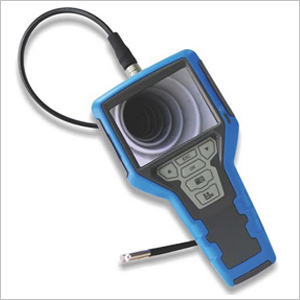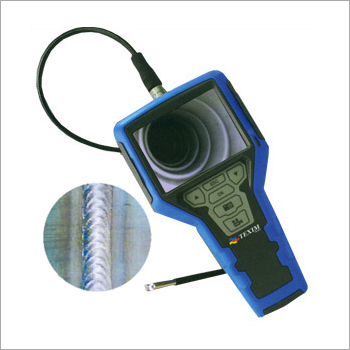Video Borescopes
Price 177000.0 INR/ Piece
Video Borescopes Specification
- Measurement
- Corneal curvature, height, power map
- Lens
- High-resolution plano-convex lens
- Objective
- Non-contact corneal surface analysis
- Theory
- Placido disk-based reflection method
- Product Type
- Video Borescopes
- Material
- PVC
- Size
- Standard
- Function
- Maps corneal curvature and elevation
Video Borescopes Trade Information
- Minimum Order Quantity
- 1 Piece
- Supply Ability
- 100 Pieces, Piece Per Day
- Delivery Time
- 2 Days
- Sample Policy
- Contact us for information regarding our sample policy
About Video Borescopes
Video Borescopes is an optical instrument which is used for the inspection of various intricate machines to easily view inside hard-to-reach places to save time and money on inspection and repairing procedures. It is provided with a high definition camera with a high resolution to record high quality videos for better visuals. It is available in many different sizes with a wire length in between 2 to 10 metres. The soft touch button control panel makes it very easier to use this device.
- Diameters : 5.8, 8, 10 mm
- Lengths : 2 to 10 Meter Length Available
- Without Articulation / With Articulation : 4-Way
- High Resolution CCD Image
- High Definition VGA LCD Display
- Built-in Video Recording & Digital Image Capture
High-Resolution Imaging
Each borescope is equipped with a plano-convex lens that delivers crisp, detailed imaging crucial for corneal assessments. This high-resolution capability ensures precise mapping of curvature, elevation, and power distribution, supporting accurate diagnoses and patient care.
Non-Contact Surface Analysis
Our borescopes operate using the Placido disk-based reflection method, enabling clinicians to analyze the corneal surface without direct contact. This approach minimizes the risk of infection and discomfort, promoting patient safety and ease during examinations.
Durable and Ergonomic Design
Constructed from robust PVC material, these video borescopes are both lightweight and sturdy, making them ideal for routine clinical use. Their standard size and ergonomic build facilitate comfortable handling and reliable operation in diverse ophthalmic settings.
FAQs of Video Borescopes:
Q: How does the Placido disk-based reflection method work in these video borescopes?
A: The Placido disk-based reflection method projects concentric rings onto the corneal surface. The reflections captured by the high-resolution lens are analyzed to determine accurate measurements of corneal curvature, elevation, and power maps, which are essential for comprehensive surface analysis.Q: What benefits does non-contact corneal mapping provide?
A: Non-contact mapping significantly reduces the risk of infection and eliminates patient discomfort because there is no direct touch to the eye. This technique also ensures more consistent measurements and maintains corneal integrity during repeated assessments.Q: Where can these video borescopes be used most effectively?
A: These devices are best suited for clinical ophthalmic practices, hospitals, and specialty eye care centers. Their advanced non-contact analysis makes them ideal for high-volume patient environments, ensuring efficient and reliable corneal evaluations.Q: When should corneal surface analysis be performed using this equipment?
A: Corneal surface analysis with these borescopes is recommended in preoperative evaluations for refractive surgery, contact lens fittings, monitoring corneal diseases, and routine ophthalmic checkups where detailed curvature and elevation data are required.Q: What is the process for mapping the corneal surface with this borescope?
A: Upon positioning the patient, the borescope projects Placido disk rings onto the cornea. The high-resolution plano-convex lens captures the reflected patterns, which are then processed to generate detailed curvature, elevation, and power maps for diagnostic interpretation.

Price:
- 50
- 100
- 200
- 250
- 500
- 1000+
More Products in Video Borescope Category
Video Borescope
Price 177000.0 INR / Piece
Minimum Order Quantity : 1 Piece
Color : Black And Blue
Theory : Placido diskbased reflection method
Function : Maps corneal curvature and elevation
Objective : Noncontact corneal surface analysis

 Send Inquiry
Send Inquiry



 Send Inquiry
Send Inquiry Send SMS
Send SMS